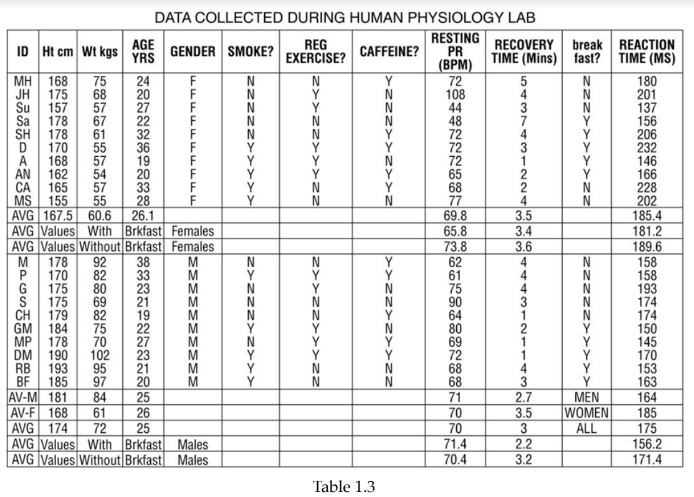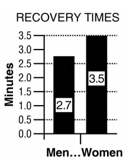Refer to Table 1.3 and the bar graph.
A. Write a hypothesis regarding gender and recovery time.
B. What is the dependent variable? What is the independent variable?
C. Create a graph using the averages from the data table. Based on these data, what do you conclude?

A. A prediction such as "Males recover from exercise more quickly than females" would be appropriate.
B. The independent variable is gender; the dependent variable is recovery time.
C. A bar graph such as the one below is appropriate. In this study, men recovered from exercise more quickly than
women.

You might also like to view...
Nucleosidase is an enzyme that breaks the
A. phosphodiester bond between nucleotides within DNA. B. bond that attaches the phosphate to the nucleoside. C. bond between the sugar and the nitrogenous base of the nucleoside. D. bonds within the nitrogenous bases of rRNA.
Where do humans obtain most of their water?
A) Drinking water B) Water trapped in solid food C) Metabolic water D) Condensation reactions
What enzyme is responsible for digesting emulsified fats?
a) Gastric lipase b) Chymotrypsin c) Pancreatic lipase d) Pancreatic amylase
Which statement correctly describes what happens during inspiration?
A. The external intercostal and sternocleidomastoid muscles contract to expand the rib cage and the diaphragm contracts to flatten its dome shape. B. The external intercostal, pectoralis major, and sternocleidomastoid muscles contract to expand the rib cage and the diaphragm relaxes to flatten its dome shape. C. The external intercostal, pectoralis major, and sternocleidomastoid muscles contract to expand the rib cage and the diaphragm contracts to flatten its dome shape. D. The external intercostal, pectoralis minor, and sternocleidomastoid muscles contract to expand the rib cage and the diaphragm contracts to flatten its dome shape.